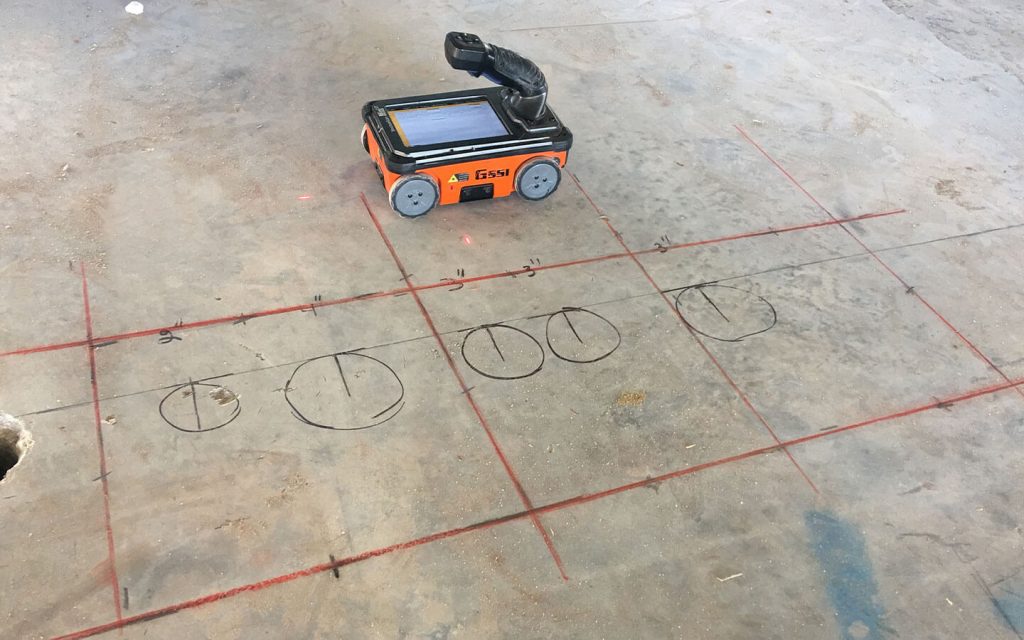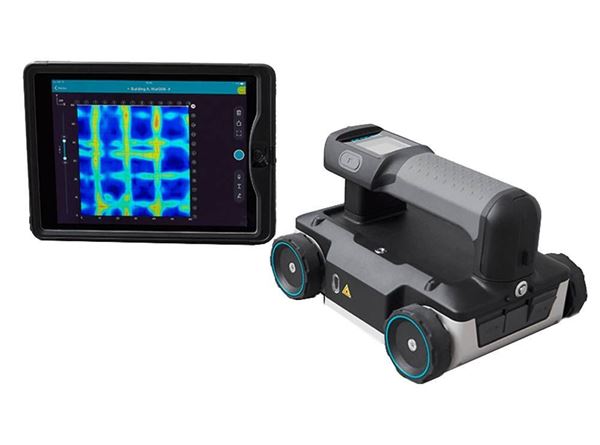Introduce the Transformative Power of Concrete Scanning in Optimizing Efficiency and Safety And Security
Concrete scanning has arised as an important device in the building and construction market, supplying unrivaled benefits in improving job effectiveness and making certain safety and security criteria. The transformative power of concrete scanning exists in its capacity to give detailed insights and real-time information, revolutionizing how projects are intended and implemented.
Significance of Concrete Scanning
Guaranteeing the architectural stability and safety of building projects starts with the vital step of conducting thorough concrete scanning. Concrete scanning is a non-destructive approach utilized to spot and map subsurface elements within concrete frameworks. This procedure is crucial in determining potential threats, such as rebar, post-tension cords, and conduits, that might be concealed within the concrete. By making use of sophisticated innovations like ground-penetrating radar (GPR) and electromagnetic induction, construction teams can accurately situate these components without triggering any damages to the structure.
The significance of concrete scanning can not be overemphasized, as it plays a crucial duty in avoiding crashes, reducing task delays, and making certain the long-term toughness of the building. By determining possible risks before the building phase starts, home builders can apply suitable security procedures and make educated decisions regarding the design and execution of the job. In addition, concrete scanning helps in enhancing job timelines and spending plan by staying clear of unexpected expenses and delays that may occur because of unforeseen obstructions within the concrete. Inevitably, buying extensive concrete scanning is a positive method that boosts both performance and safety and security in building and construction tasks.
Exactly How Concrete Scanning Functions
Concrete scanning operates as an essential device in building jobs by employing innovative innovations to detect and map subsurface components without creating structural damage. Ground Penetrating Radar (GPR) and Electromagnetic Induction (EMI) are 2 primary techniques used in concrete scanning.
Throughout the scanning process, the data accumulated is examined in real-time, allowing prompt identification of possible risks or barriers under the surface area. This information aids in decision-making, making certain that construction tasks proceed safely and effectively. In addition, 3D imaging software can be used to create topographic maps of the subsurface elements, even more improving task planning and execution. By utilizing these innovative technologies, concrete scanning dramatically decreases the danger of pricey damages and injuries on building websites.
Advantages of Concrete Scanning
Utilizing sophisticated scanning modern technologies in construction jobs offers a wide variety of advantages, boosting both efficiency and safety on-site. One of the key benefits of concrete scanning is the capacity to spot and situate ingrained items such as rebar, post-tension cables, and channels accurately. By recognizing these aspects prior to boring or reducing right into concrete frameworks, the danger of accidental strikes is dramatically decreased, avoiding potential injuries to workers and damages to the structure itself. Furthermore, concrete scanning helps in planning and developing more effectively, as it offers exact info about the location and depth of architectural elements.

Situation Researches: Concrete Scanning Success

In another situation, a building firm utilized 3D concrete scanning to examine the problem of aging concrete frameworks in a historic building. The thorough scans provided valuable insights into the extent of deterioration and helped prioritize maintenance efforts properly. By proactively attending to areas of worry identified with scanning, the company was able to expand the lifespan of the framework and ensure passenger safety.
These study highlight the transformative power of concrete scanning in boosting performance, precision, and safety and security in building and construction jobs.
Implementing Concrete Scanning in Projects
Implementing advanced scanning modern technologies during building tasks has actually ended up being significantly important for enhancing precision and safety. By integrating concrete scanning right into task preparation and implementation, building teams can determine prospective dangers, such as rebar or post-tension cords, hidden within concrete structures. This look at here now proactive method reduces the danger of mishaps, delays, and costly rework, ultimately leading to more efficient task timelines and spending plans.
To apply concrete scanning properly, task managers ought to collaborate carefully with skilled scanning experts to click for more identify the most ideal scanning methods for the particular task demands. Involving scanning experts from the onset of a job allows the team to develop thorough scanning strategies that resolve crucial areas of concern and make certain comprehensive information collection.
In addition, including concrete scanning right into normal project process can enhance decision-making procedures, as real-time scan information offers immediate insights into the condition of concrete structures - Concrete Scanning. This data-driven method assists in notified problem-solving and enables teams to make adjustments immediately, cultivating a society of performance and security throughout the job lifecycle

Conclusion
To conclude, concrete scanning plays a vital role in enhancing effectiveness and security in building and construction projects. By utilizing advanced modern technology to detect and map out underlying frameworks within concrete, this process assists to avoid expensive mistakes, make sure structural stability, and decrease threats on website. With the capacity to uncover hidden components and supply exact information, concrete scanning confirms to be an important tool for enhancing job end results and making best use of total success.
Concrete scanning is a non-destructive method used to spot and map subsurface aspects within concrete structures. In addition, concrete scanning assists in maximizing project timelines and budget plan by staying clear of unexpected expenses and delays that may develop due to unforeseen obstructions within the concrete. One remarkable case research involves a massive restoration project where concrete scanning played an important duty in guaranteeing project success.In an additional instance, a construction company made use of 3D concrete scanning to examine the problem of maturing concrete frameworks in a historic structure. By integrating concrete scanning right into project preparation and resource implementation, construction groups can determine possible risks, such as rebar or post-tension cords, hidden within concrete frameworks.